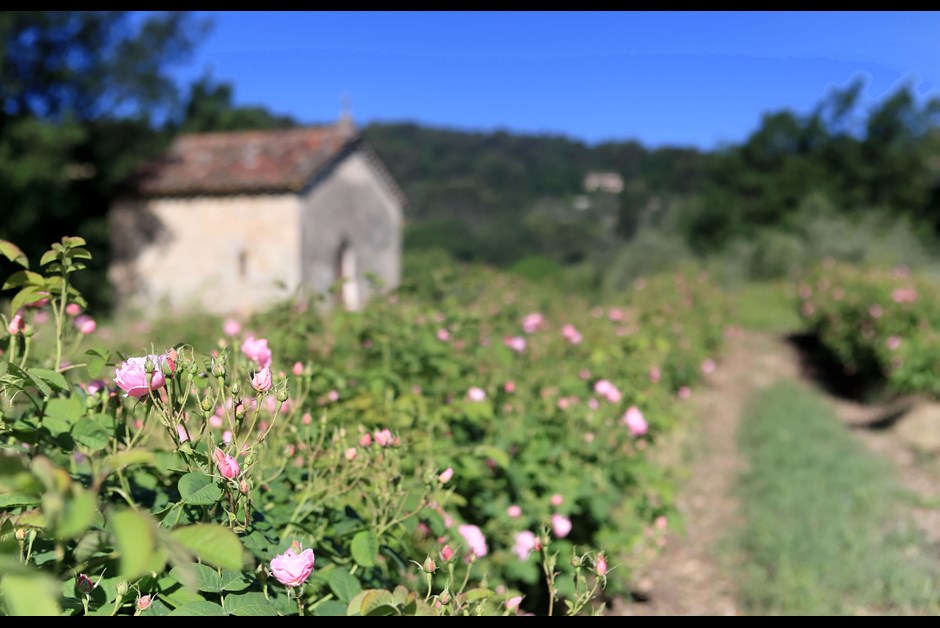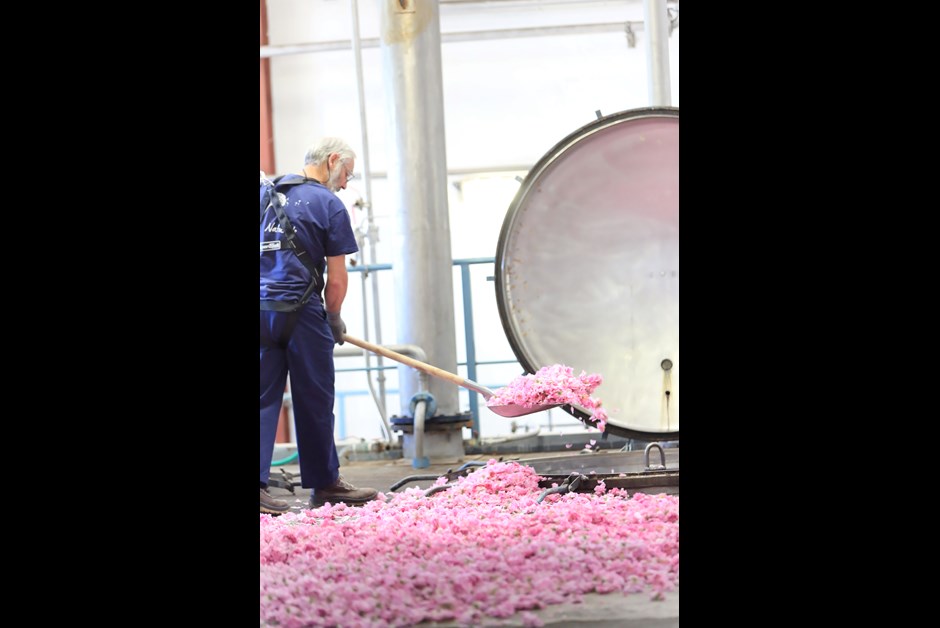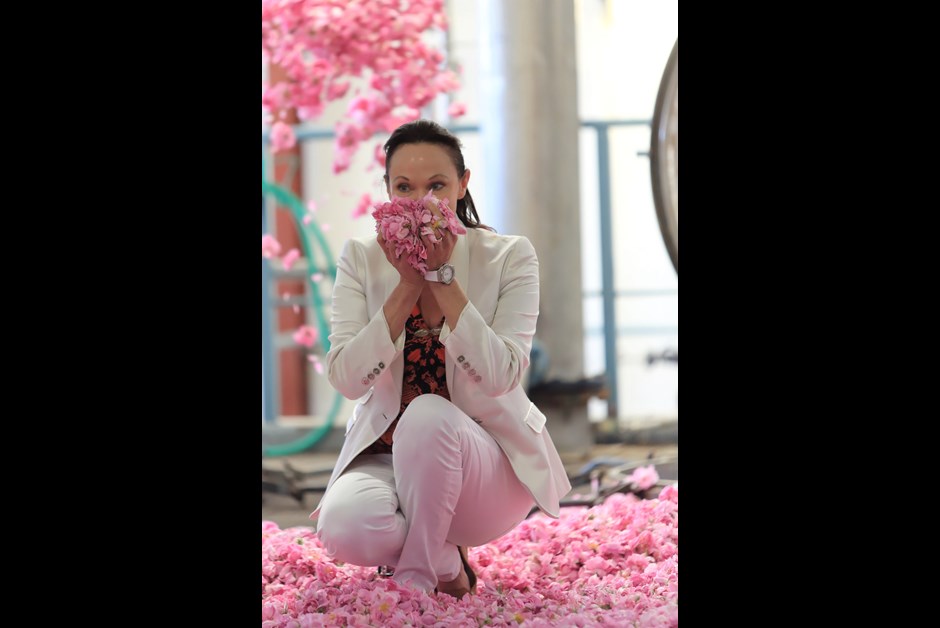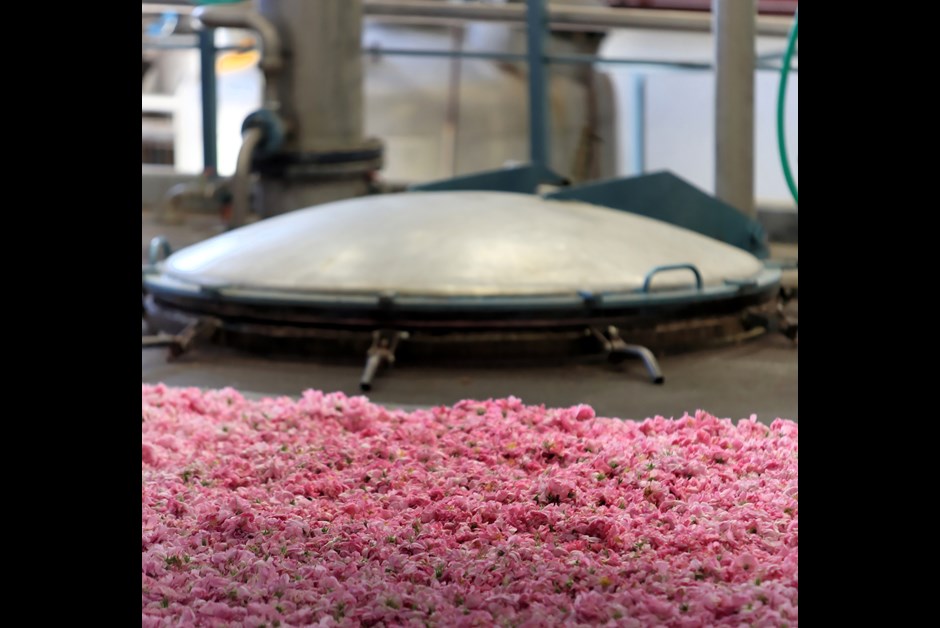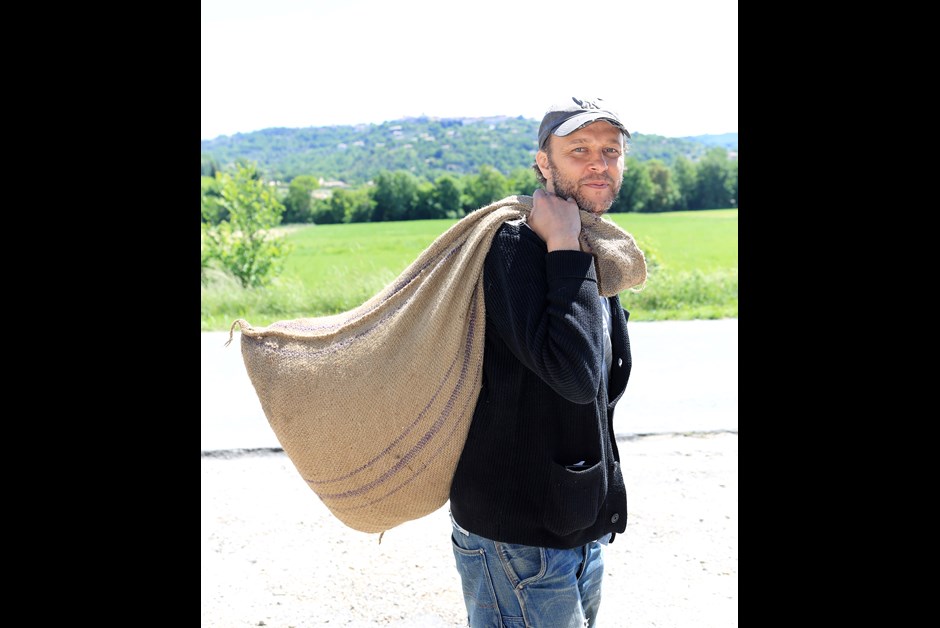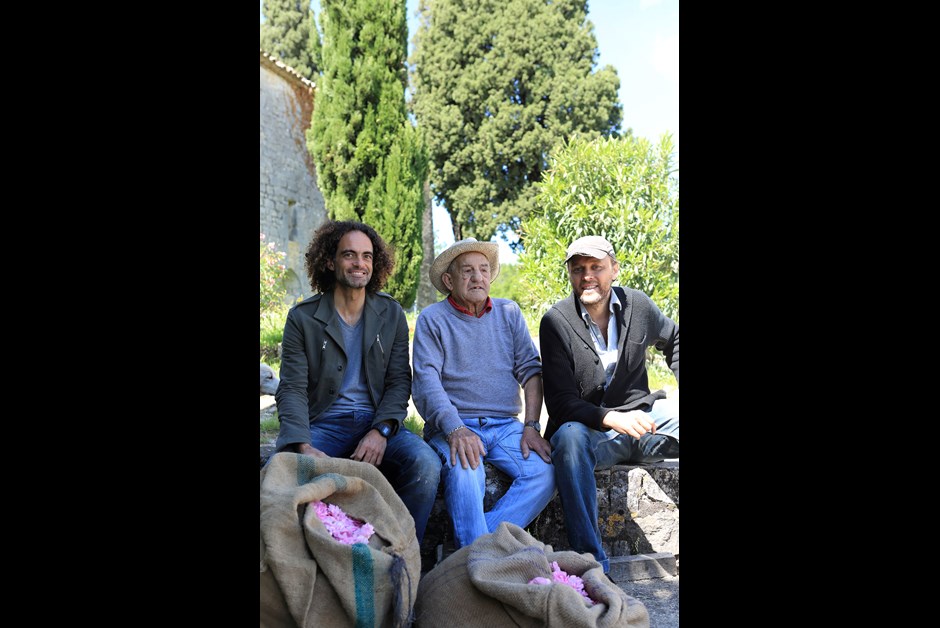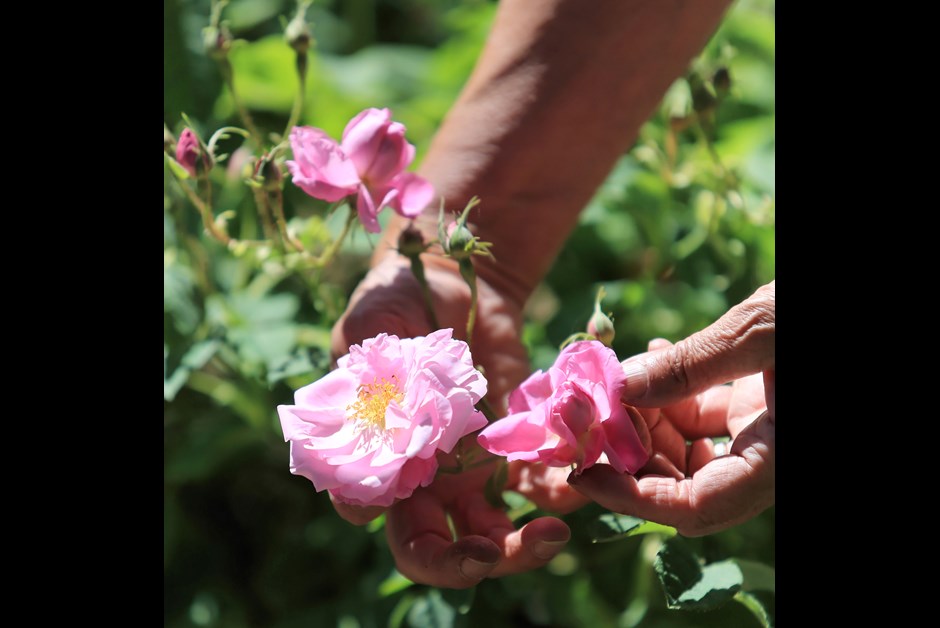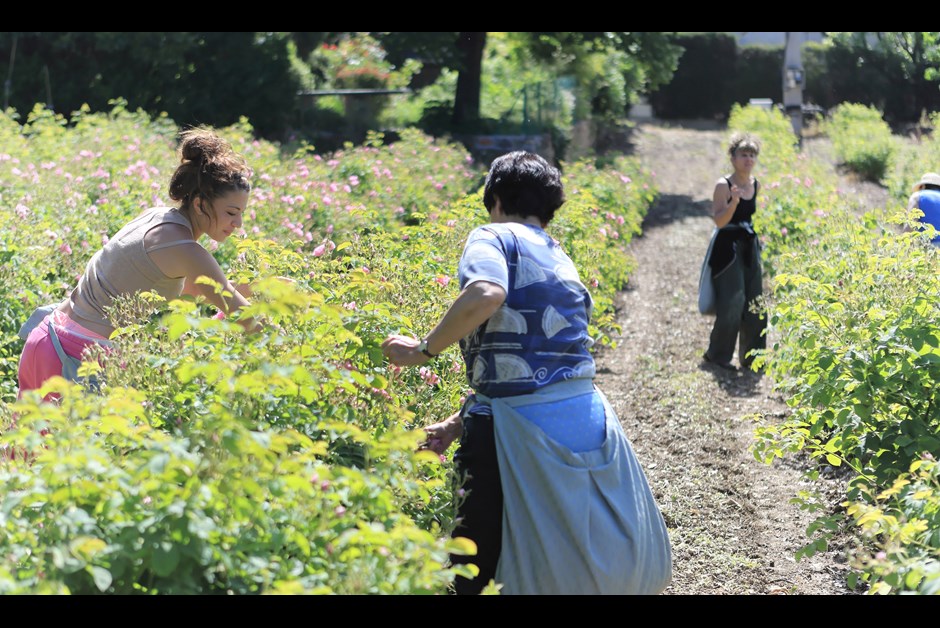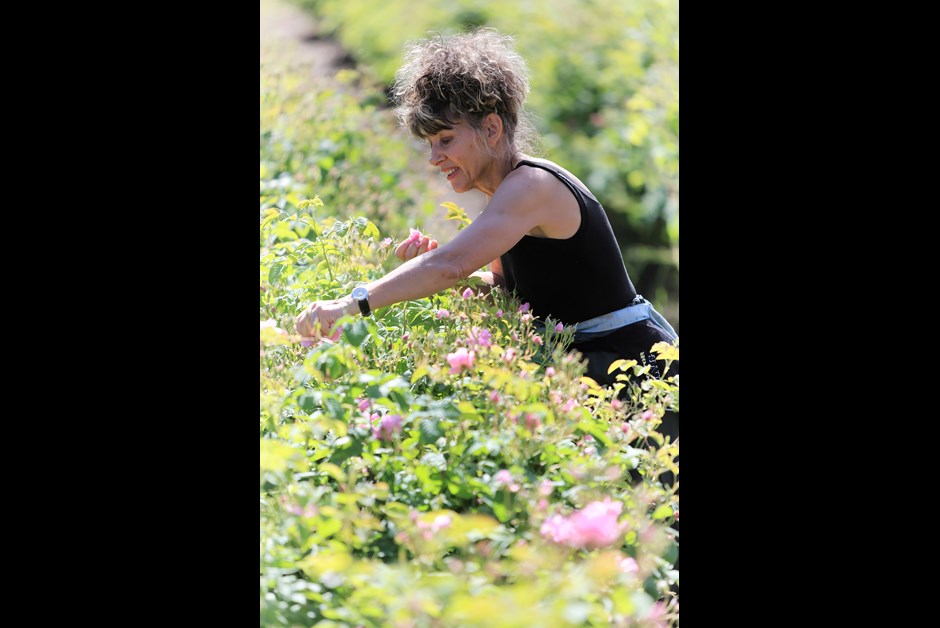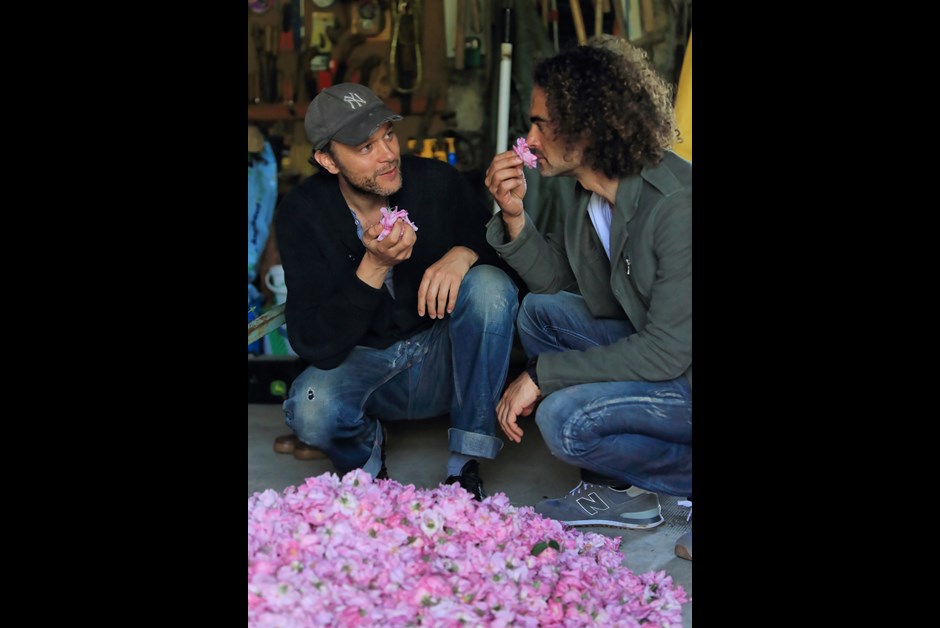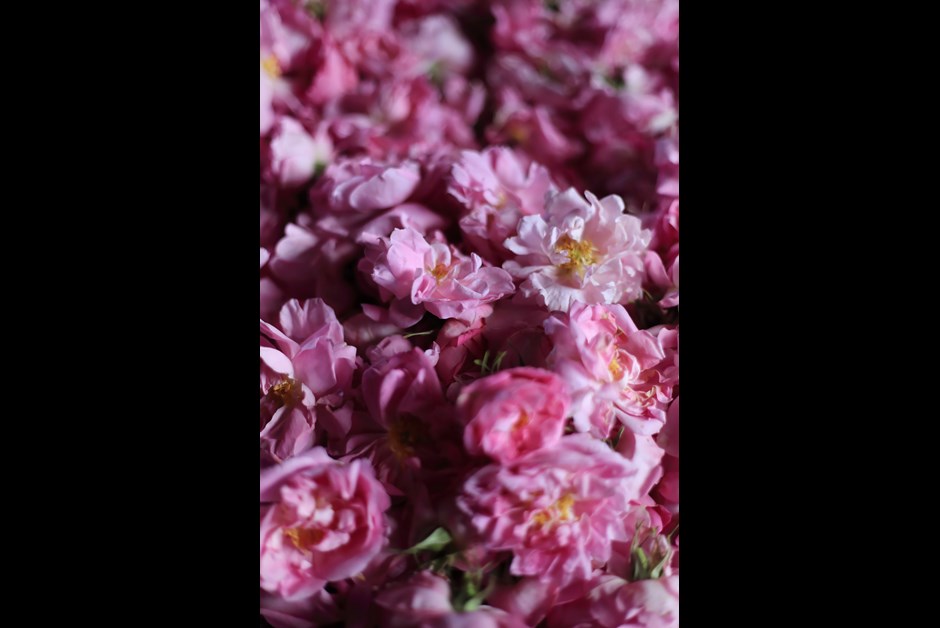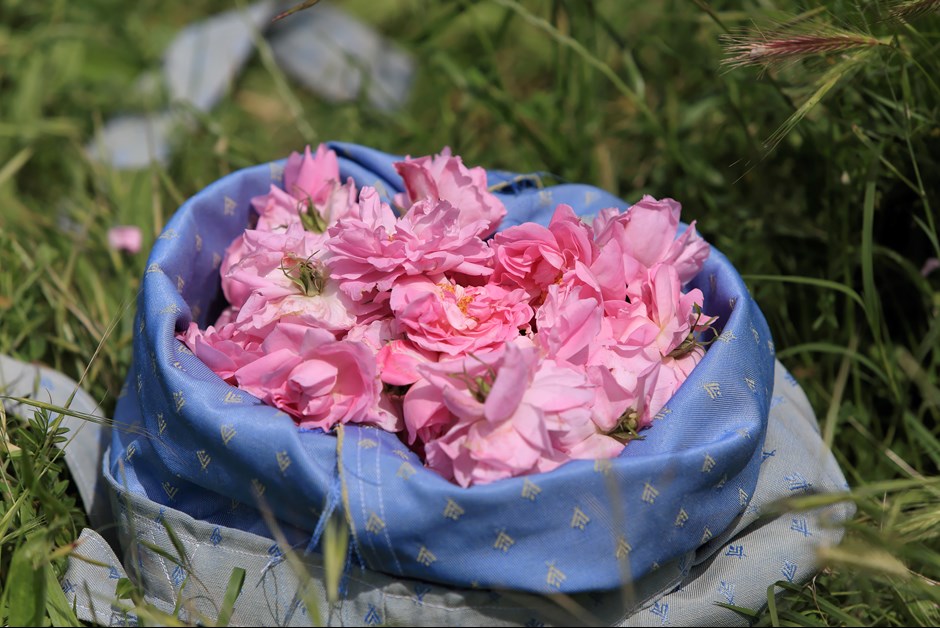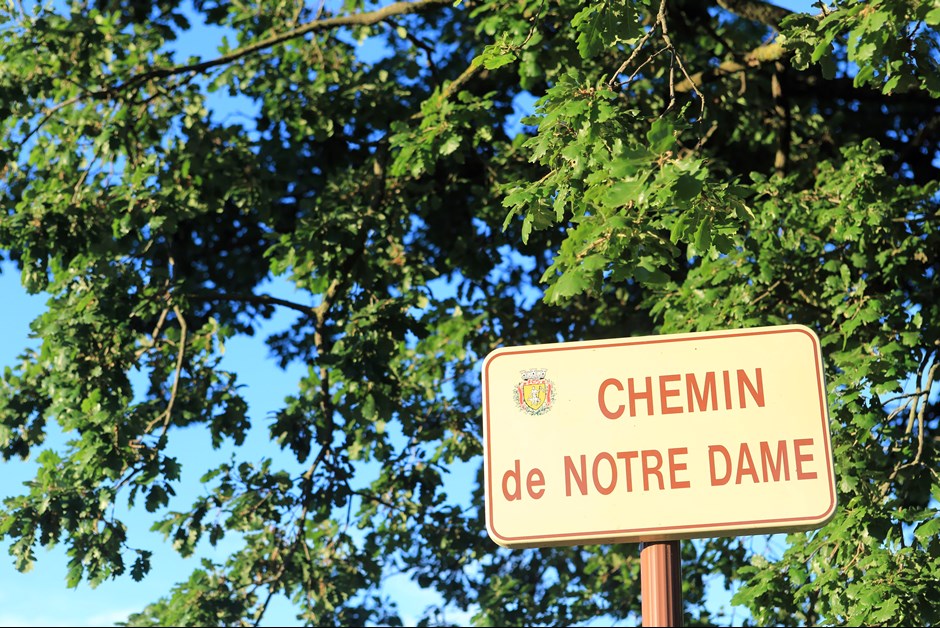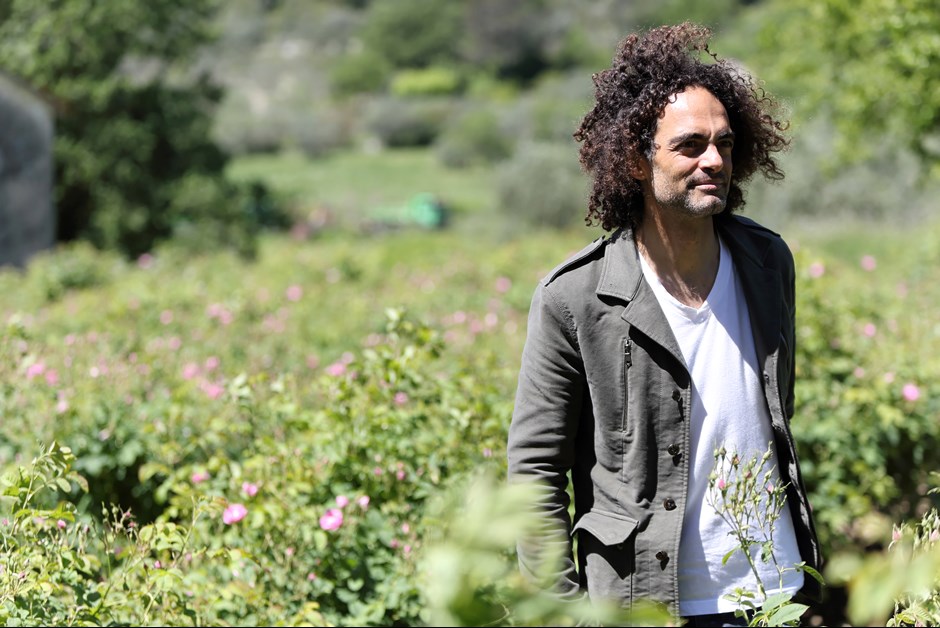La Vie en Rose
Join the flower harvest in France and journey from bud to bottle in the creation of Fairmont’s new lobby fragrance.
By Denyse Beaulieu
(Photos by Ed Wright)
Cup the rose gently. Pinch between thumb and forefinger. Give a slight twist. Drop the pink blossom into the deep pocket of the sacourette, an apron worn front-to back so the thorns don’t snag it…
Éliane is showing me how to pick the rose de mai, one of the two main varieties of roses used in perfumery. The flowers must be plucked between sunrise and mid-morning on the very day they bloom. So, for three weeks in May, she and other women from the nearby village of Fayence will come every day to harvest the flowers Alain Rebuffel’s family has grown for five generations in this 1.5-hectare field wedged between vineyards and olive groves just above the French Riviera.
Some day, you may breathe in a particle of the very blossom I picked. The rose harvest is the first stop on a globe-spanning journey undertaken by Fabrice Penot and Édouard Roschi, the co-owners of New York-based boutique perfume brand Le Labo, to create an exclusive lobby scent for Fairmont Hotels & Resorts. I’ve been invited, along with a select group of international journalists, to take in the first breath of that future fragrance here in the legendary birthplace of French perfumery – Grasse.
The burlap bags holding the harvesters’ aromatic bounty sit in the shade of Notre-Dame-des-Roses, a 17th-century chapel whose name bears witness to the age-old tradition of the region. A tanners’ town in the Middle Ages, Grasse started growing flowers to make fragranced glove leather, a fashion introduced by Catherine de’ Medici after she came to France in 1533 to marry King Henry II. The town would go on to produce many of the essences used by Paris perfume houses – rose, lavender, jasmine, tuberose. Entire dynasties of perfumers, known as "noses," hail from the region.
Today, the flower fields that quilted the area until the 1960s have been all but obliterated by the high cost of labor and real estate. But since flowers, like grapes, vary according to their terroir, brands such as Chanel, Dior and Patou are still willing to pay premium prices for the peerless essence of rose pays (the "country rose" of Grasse). It takes one ton of blossoms to obtain a kilo of its essence, which can fetch up to €10,000.
We drive out with the burlap sacks to the extraction plant owned by Firmenich, one of the world’s largest perfume and flavor companies (global best sellers like CK One and Acqua Di Giò come from its labs). This is where Rebuffel’s roses will be reborn as one of the most precious ingredients in the perfumer’s palette.
Spilled out onto the gray concrete floor of Firmenich’s extraction facility, the pink blossoms are achingly vivid. Two workers tethered to harnesses shovel the blooms into six-foot-deep vats. The final moment, as they shut the lids on the last of the freshly plucked blossoms, is poi-gnant. The roses will now surrender their souls to three washes of solvent, a traditional method perfected in Grasse in the late 19th century. This yields a wax called the concrète, which is rinsed with alcohol then distilled to extract the aromatic fraction called the absolute: the quintessence of the rose de mai, green-tinged with a hint of hay, a dollop of raspberry jam and a suggestion of wine dregs.
Back in Monaco after the hour-long drive from Grasse, our little group of harvesters-for-a-day is enjoying the view from Fairmont Monte Carlo’s Billionaire Sunset Lounge, possibly the most sought-after rooftop in the most glamorous square mile in the world. Overlooking a sea tinted the shade of pink Champagne by the sunset, we nibble on the season’s first strawberries, dipped in delicate rose and violet jellies.
I tell my host, Alexandra Blum, Fairmont’s executive director of global brand development and partnerships, about the olfactory bubble that popped in my memory this morning as I took my shower. The odd short circuit carried me back to my first stay at Fairmont The Queen Elizabeth, a landmark hotel in my native Montreal, Canada, where I first encountered the in-room amenities scented with Le Labo’s Rose 31 fragrance.
With its sprinkle of spices over wood notes laced with incense smoke, Rose 31 has so much character you half expect it to strike up a conversation with you over coffee and croissants. Renewing our acquaintance this morning behind the shower curtain of my room at Fairmont Monte Carlo somehow felt as though Monaco gearing up for the Grand Prix were connected with Montreal on that snowbound New Year’s Eve. And, from now on, I’m sure every time I smell Rose 31 I’ll remember dunking a melting croissant into my café au lait on the terrace of my room on the Riviera, squinting as the rising sun turns the sea and hills into molten gold under a lavender sky.
Blum nods and smiles. Mission accomplished. Turning moments into memories is Fairmont’s motto. "We asked ourselves what our role should be in the memory-making process," she explains. "How we could reconcile the diverse hotels that we manage. How to make the historic modern and the modern relevant without changing bricks and mortar."
The answer is scent: the potent low-tech tool with the power to thread together different locations around the world. And, more significantly, to weave them into the travel experience through a sense so intimate it connects directly with the part of our brains where emotional memories are formed. But that scent had to be unique enough to leave a lasting imprint. So instead of defaulting to one-size-fits-all citrus or green tea notes produced by mainstream luxury brands, Blum opted for a rich and complex niche perfume.
Penot and Roschi selected Rose 31, hailed Best Fragrance of the Year in 2007 by Wallpaper magazine, to scent Fairmont’s soaps, lotions and shampoos. Of the 22 scents Le Labo produces, it is a favorite in every country. Its very originality is what allows it to sidestep cultural preferences, says Roschi: "It’s like a reset button. An amazing emotion generator."
Commissioning a scent that would express Fairmont’s olfactive identity from check in to check out was the next logical step. "In the same way perfume affects the perception of a person, a smell can modify our perception of space," adds Penot. And so the Fairmont scent-scape that began with Rose 31 will continue with an original Le Labo lobby fragrance – one linked to the amenities by their shared base of rose.
From the harvest in Grasse, the creative duo will move on to other countries to sniff out the ingredients that best express the spirit of each land. Their trek will take them from the Incense Road in Oman to the Spice Route in China and India; from Canada, they will draw the scent of Pacific red cedar. They will then have a perfumer translate those stories into a fragrance formula destined for the lobby scent and a collection of candles.
With this personal touch – a creative journey turned into a thing of beauty – the hands that pluck the flowers will reach out to the hands that open the lobby door. All the more reason to stop and smell the roses: Their scent is the future memory of what you are living now.
Experience Grasse with a tour of the rose de mai fields during morning harvest, followed by a trip to the Musée International de la Parfumerie, as part of the FAIRMONT MONTE CARLO SCENT & SENSES package. Admission to the museum includes a visit to the Jardins du MIP, an outdoor exposition of the herbs and flowers that made Grasse the capital of perfumery.
